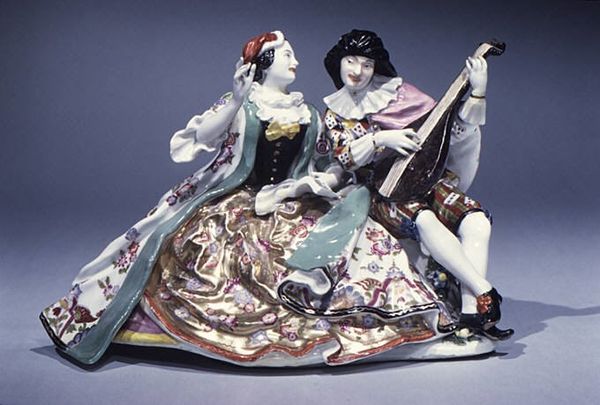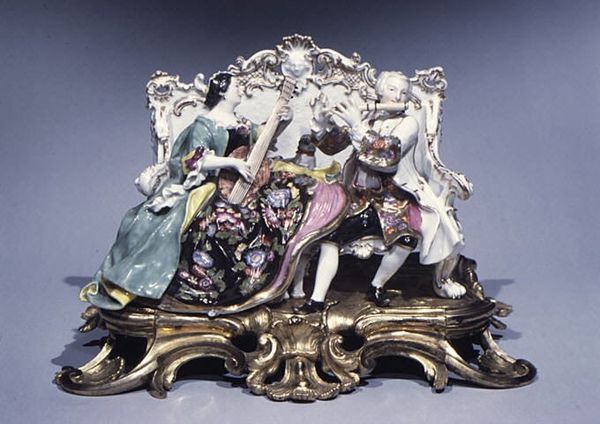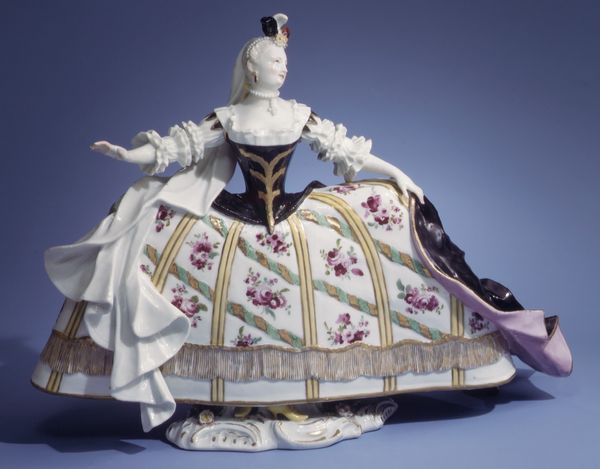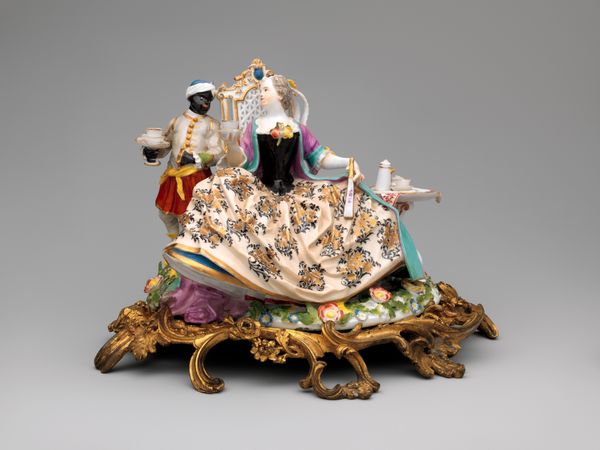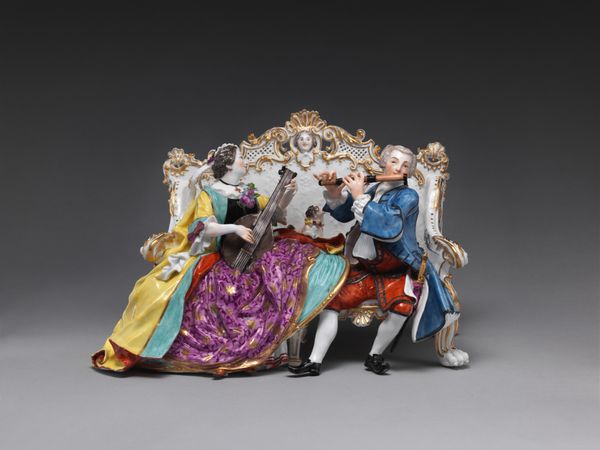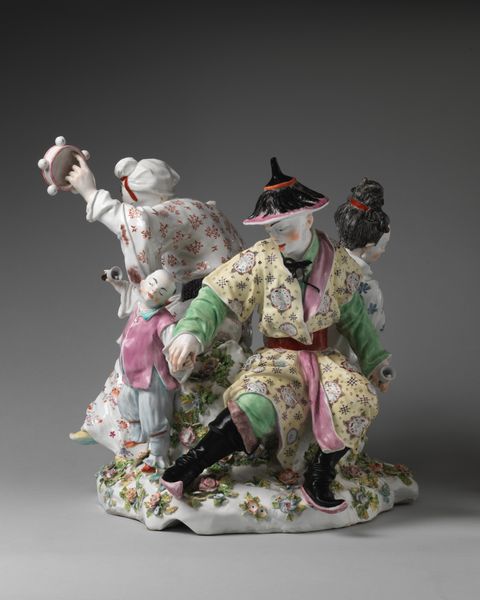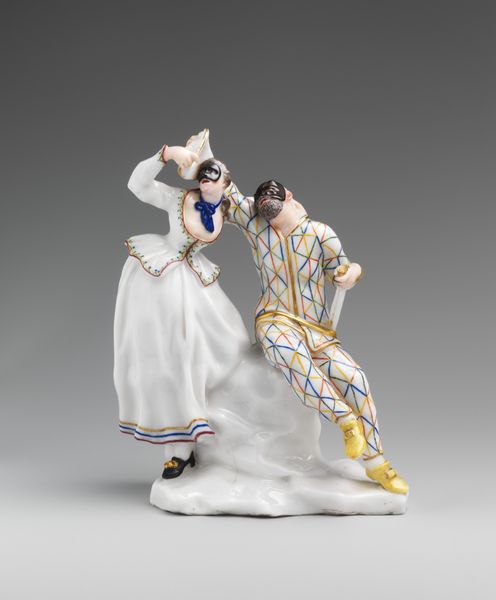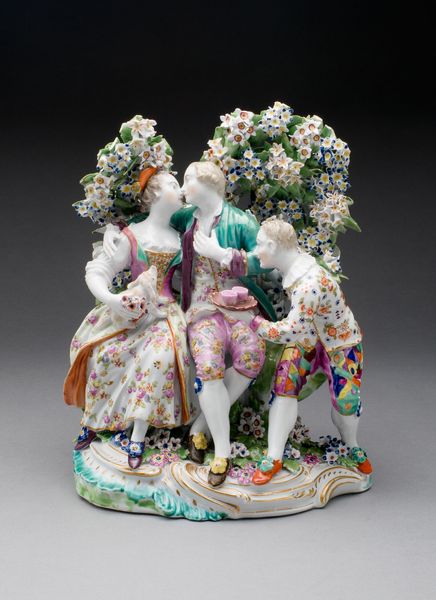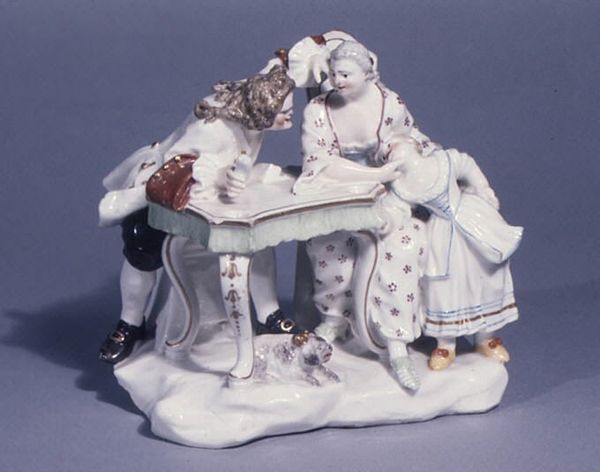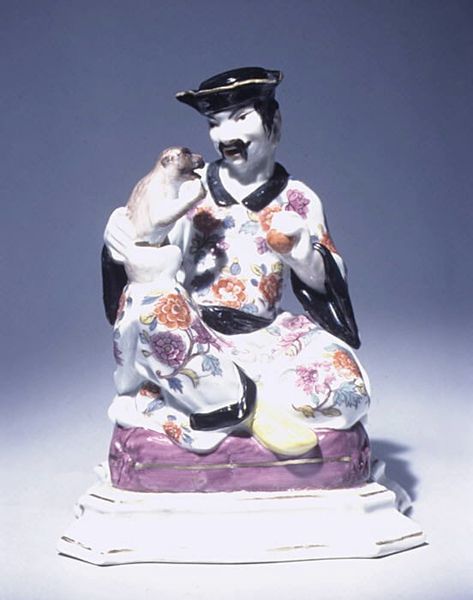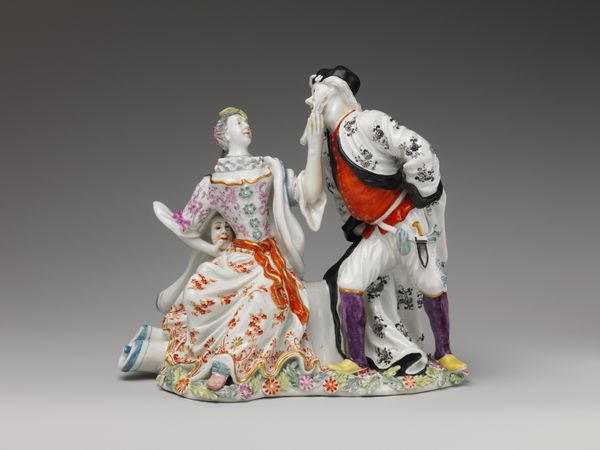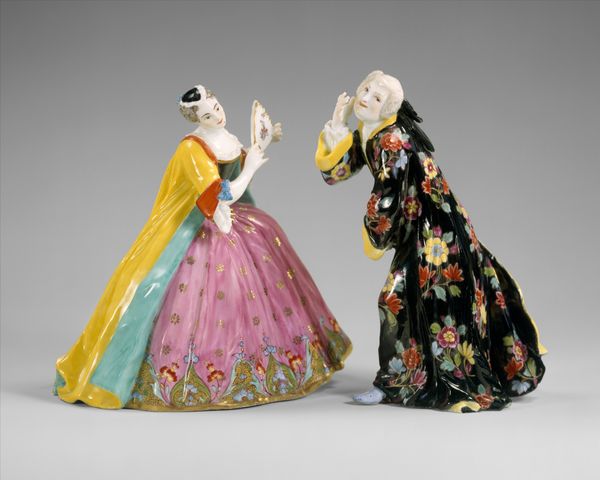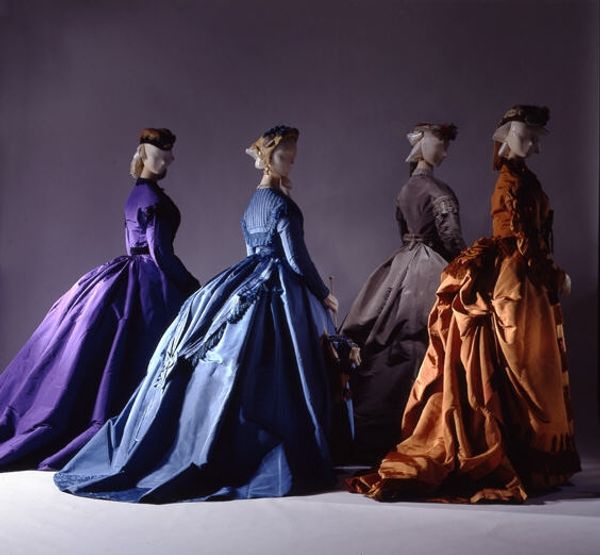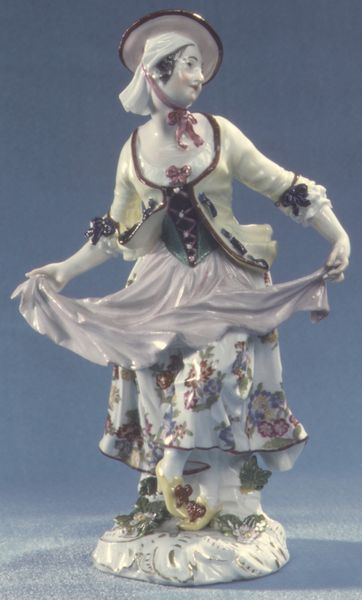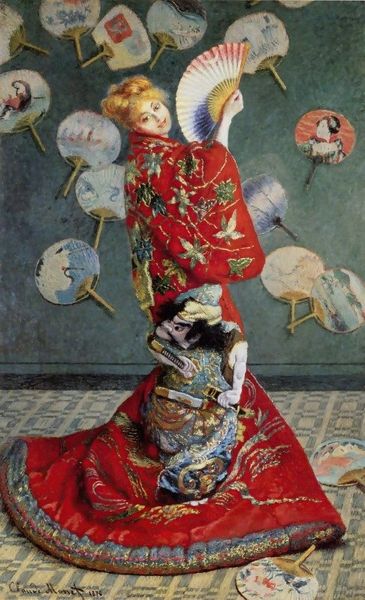
ceramic, porcelain, sculpture
#
ceramic
#
porcelain
#
figuration
#
sculpture
#
group-portraits
#
genre-painting
#
decorative-art
#
rococo
Dimensions: Height: 8 in. (20.3 cm)
Copyright: Public Domain
Editor: This is "Marchand de Coeurs," a porcelain sculpture made between 1733 and 1743 by Meissen Manufactory. It feels so intricately crafted and lighthearted. What's your take on it? Curator: What strikes me is the performance of courtship represented here, and the socio-economic context that makes this performance possible. We're not simply looking at a scene of romance, but a tableau vivant of privilege. How might we analyze the gender dynamics at play, given that the women are adorned in finery, while the men seem to be facilitators, serving their desires? Editor: So you're saying there’s a power imbalance depicted, even within this seemingly pleasant scene? Curator: Precisely. The Rococo style often masked these inequalities behind idealized images of leisure and beauty. Consider who this piece was made for – the aristocracy. The sculpture becomes a mirror reflecting their values, and perhaps also, a performance of their perceived benevolence, a kind of theater for self-justification. Where do you see elements of theatricality at play in this piece? Editor: I see it in the posed gestures, the elaborate costumes... It feels like a scene from a play. The title too – "Merchant of Hearts" – implies a transaction, not just romance. Curator: Exactly. It suggests a commodification of affection, and this sculpture, precious and fragile, becomes a commodity itself, a marker of status and wealth, reinforcing existing social hierarchies. This seemingly innocent scene has an underpinning of carefully constructed and maintained social dynamics. What have you gleaned from viewing the art through the lens of critical theory? Editor: It completely changes the way I see it! It’s not just a pretty sculpture anymore; it’s a statement about power and class in 18th-century society. Curator: Precisely. The beauty serves as a point of entry into deeper analysis, one that unravels these hidden structures of power.
Comments
No comments
Be the first to comment and join the conversation on the ultimate creative platform.
